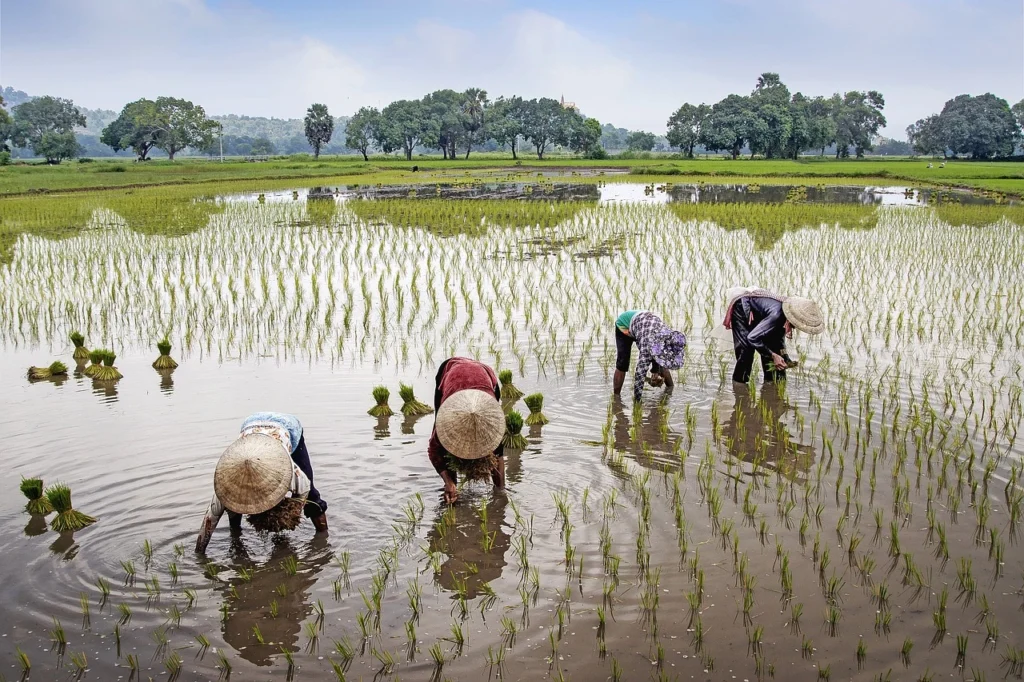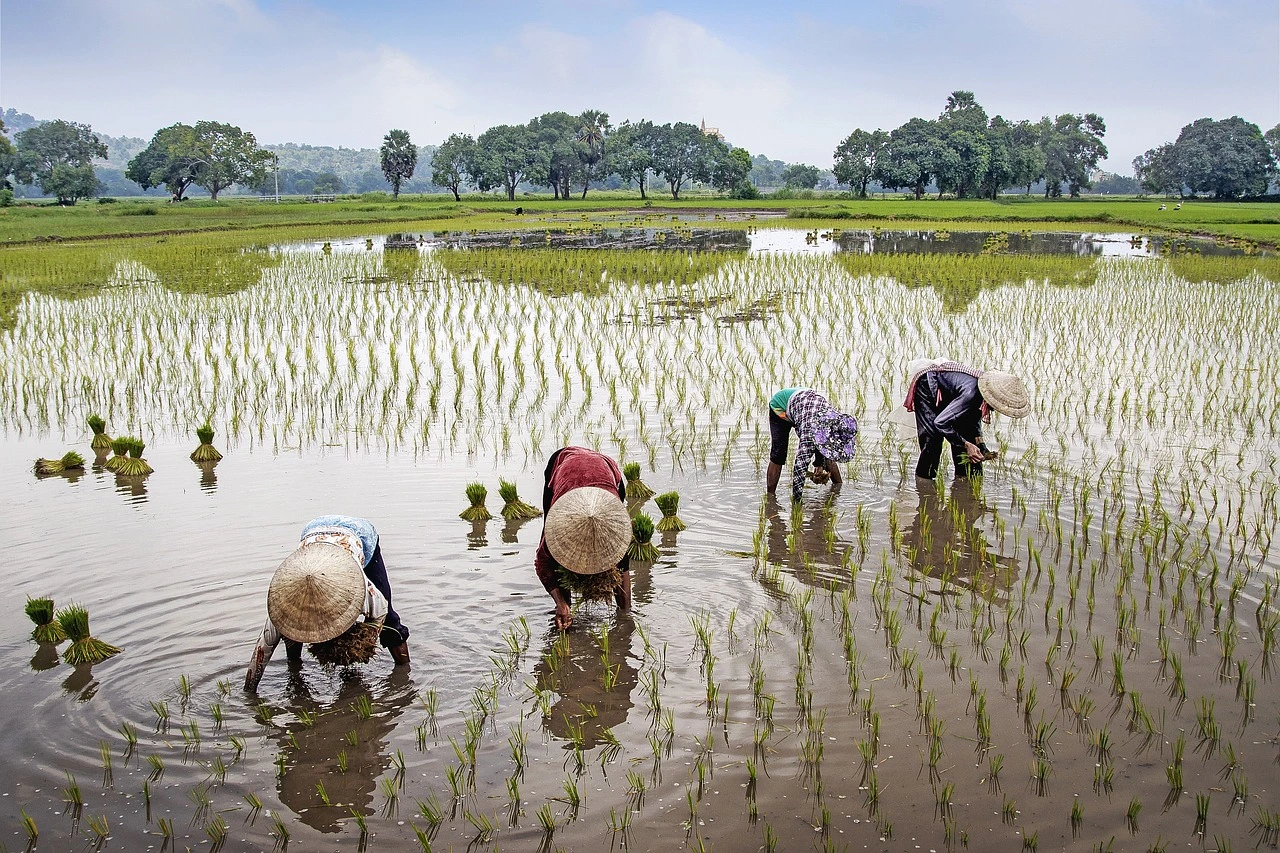
Agriculture is one of the most crucial sectors of the global economy, providing food security and employment to millions of people. However, it is also one of the riskiest industries due to its dependence on natural factors like weather, pests, and diseases. Farmers face considerable financial risks, but agriculture insurance offers a way to safeguard their livelihoods. This article will delve into the importance of agriculture insurance, the different types available, and how it helps in sustaining agricultural productivity.
What is Agriculture Insurance?
Agriculture insurance is a risk management tool that provides farmers with financial compensation in the event of crop failure, livestock loss, or damage caused by unforeseen events such as droughts, floods, or pest invasions. It ensures that farmers can recover from these incidents without suffering a complete financial collapse. With agriculture insurance, farmers can rest assured that their operations will continue even when they face adverse conditions.
Governments, in collaboration with insurance companies, often promote agriculture insurance through various schemes and subsidies. These efforts are aimed at making insurance accessible and affordable, especially for small-scale farmers, who are often the most vulnerable.
Why Agriculture Insurance is Essential
Farming is inherently risky due to its dependence on factors beyond human control, such as weather and disease outbreaks. These are some reasons why agriculture insurance is essential for farmers:
- Protection Against Crop Loss: Agriculture insurance provides farmers with coverage for crop failures caused by natural disasters, helping them avoid financial ruin when their crops are destroyed.
- Income Stability: Farmers’ incomes fluctuate based on factors like yield and market prices. Agriculture insurance helps stabilize their income by providing compensation when their yields fall short or market prices drop unexpectedly.
- Encouragement for Innovation: Many farmers are hesitant to invest in new technology or crop varieties because of the risks involved. With the assurance of insurance, farmers can take calculated risks, invest in modern practices, and boost productivity.
- Access to Financial Services: Banks and lending institutions are more likely to extend credit to insured farmers, considering them less risky. This increases farmers’ access to loans, which can be invested in improving farm infrastructure, purchasing better seeds, or adopting sustainable practices.
Types of Agriculture Insurance
Agriculture insurance is designed to meet the specific needs of farmers, offering a variety of coverage options. Below are the main types of agriculture insurance:
1. Crop Insurance
Crop insurance covers farmers in the event of crop failure due to natural calamities, pest invasions, or other uncontrollable factors. The two most common types of crop insurance are:
- Yield Protection: This insurance compensates farmers if their actual yield falls below an agreed-upon amount. It helps protect them from unpredictable losses caused by adverse weather conditions.
- Revenue Protection: Farmers are protected from both yield losses and falling market prices. This coverage guarantees a minimum level of revenue, ensuring that farmers can cover their production costs even in unfavorable market conditions.
2. Livestock Insurance
Farmers who raise livestock, such as cattle, sheep, or poultry, are susceptible to losses caused by disease outbreaks, accidents, or natural disasters. Livestock insurance compensates farmers for the loss or death of animals, allowing them to maintain their operations and replace lost livestock.
3. Weather-Based Insurance
This type of insurance provides coverage based on specific weather parameters rather than actual losses. If the insured weather conditions, such as excessive rainfall or prolonged drought, occur, the farmer receives a payout. This insurance is particularly useful for mitigating the risks posed by erratic weather patterns.
4. Farm Property and Equipment Insurance
Farmers depend on machinery, tools, and buildings to run their operations. Farm property and equipment insurance provide coverage for damage, theft, or loss of these assets, ensuring that farmers can continue their work without facing major setbacks.
Benefits of Agriculture Insurance
The benefits of agriculture insurance extend far beyond individual farmers, playing a vital role in the broader economy. Some key advantages include:
1. Financial Protection for Farmers
Agriculture insurance helps shield farmers from the financial consequences of crop or livestock losses. It provides them with a financial safety net, ensuring that they can recover from setbacks and maintain their livelihoods.
2. Improved Agricultural Productivity
By offering protection against risks, agriculture insurance encourages farmers to invest in better technologies, seeds, and equipment, leading to improved productivity. It also fosters the adoption of sustainable farming practices, which can enhance long-term yields.
3. Enhanced Food Security
Agriculture insurance contributes to national food security by ensuring that farmers can continue producing food even in the face of adverse conditions. When farmers are protected, they are less likely to abandon farming, thereby ensuring a steady food supply.
Challenges in Implementing Agriculture Insurance
Agriculture insurance is a vital tool for mitigating risks associated with farming, such as natural disasters, pest infestations, and market fluctuations. However, its implementation faces several challenges that can hinder its effectiveness and accessibility. Here are some of the key challenges:
1. Limited Awareness
Many farmers are not aware of agriculture insurance or how it can benefit them. Increasing awareness through educational programs is critical to ensuring more farmers take advantage of the coverage available to them.
2. High Premiums
Insurance premiums can be expensive, especially for small-scale farmers who operate on thin margins. In many cases, farmers cannot afford to pay the premiums, limiting their access to this essential protection.
3. Complex Claim Processes
Filing and settling claims can be a complicated and lengthy process, which discourages some farmers from purchasing insurance. Simplifying and streamlining the claims process through technology can help overcome this barrier.
How Agriculture Insurance Supports Sustainable Farming
1. Risk Mitigation and Financial Security
Protection from Natural Disasters: Agriculture insurance shields farmers from financial losses due to natural disasters like floods, droughts, storms, and pests. This security allows them to adopt sustainable farming methods without the fear of complete financial ruin in the event of a disaster.
2. Encourages Sustainable Practices
- Premium Discounts for Eco-Friendly Farming: Many agriculture insurance providers offer premium discounts for farmers who adopt sustainable farming practices, such as crop rotation, organic farming, or the use of renewable energy sources. This incentivizes farmers to implement practices that reduce environmental impact.
Conclusion
Agriculture insurance is a crucial tool for farmers, helping them manage the uncertainties and risks inherent in their profession. By providing protection against natural disasters, price fluctuations, and crop failures, it stabilizes farmers’ incomes and promotes agricultural productivity. Furthermore, agriculture insurance plays a pivotal role in supporting sustainable farming practices and contributing to national food security.
Expanding access to agriculture insurance, particularly for smallholder farmers, is essential for ensuring that all farmers can benefit from this important safety net. Through education, government support, and innovation, agriculture insurance can be made more accessible and affordable, creating a resilient and prosperous agricultural sector for future generations.

